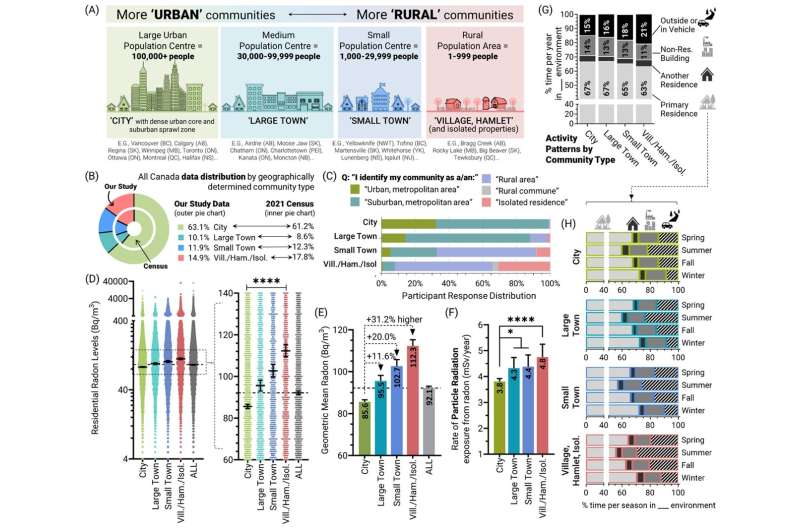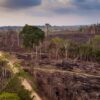University of Calgary researchers have found a link between radon exposure in rural homes based on how close they are to drilled groundwater wells. The transdisciplinary team was investigating why homes in rural communities often have a much higher concentration of radon compared with homes in urban areas.
The researchers from the faculties of medicine, science, and architecture looked at the geophysical makeup of areas, the style of home, as well as unique features on or near the property.
“For years now, in Canada and all across the world, people have documented higher radon levels in homes in more rural communities compared to homes in urban communities,” says Dr. Aaron Goodarzi, Ph.D., principal investigator and associate professor at the Cumming School of Medicine. “It’s the water wells—not the water, but the wells themselves appear to be acting as unintended straws for radon gas deep in the ground. Thankfully, lowering radon levels in a home is fixable.”
Many rural properties and communities rely on well water. The researchers also tested the water for radon and found there is not enough radon in the well water to significantly contribute to the high radon being observed in indoor air. Instead, the problem appears to result from the drill hole space existing around water well pipes.
“We know that methane gas bubbles up around the outside of some oil and gas wells,” says Dr. Cathy Ryan, Ph.D., study co-lead and professor in the Faculty of Science. “This caused us to wonder if ‘unintended’ or ‘fugitive’ radon gas migration might also be occurring along water wells.”

Rural community residential radon levels are higher relative to urban equivalents, resulting in excess radiation exposures. © Scientific Reports (2024). DOI: 10.1038/s41598-024-53458-6
Radon is an invisible, odorless, tasteless, and radioactive gas. Naturally rising from under the ground and diluting to virtually nothing in outdoor air, radon gas is often drawn up and concentrated inside modern buildings to unnaturally high and cancer-causing levels. Prolonged radon gas exposure is the leading cause of lung cancer among non-tobacco users in Canada.
“In order to design safe and healthy buildings, it’s imperative to understand the environment in which they exist,” says Josh Taron, MArch, study co-lead and the associate dean of research and innovation at the School of Architecture, Planning and Landscape at UCalgary. “While soil gas has often been overlooked in North American homes, this work gives us important insights into the geological issues that building designs must be able to address safely.”
The study, published in Scientific Reports, found, on average, individuals living in rural communities were exposed to 30 percent higher residential radon levels than people living in urban communities.
The higher rural radon effect was consistent for households across Canada. The researchers say these findings underscore the importance of regular radon testing, particularly in rural areas where drilled groundwater wells are prevalent.
More information:
Selim M. Khan et al, Rural communities experience higher radon exposure versus urban areas, potentially due to drilled groundwater well annuli acting as unintended radon gas migration conduits, Scientific Reports (2024). DOI: 10.1038/s41598-024-53458-6
Provided by
University of Calgary
Citation:
Rural communities face greater risks of radon exposure compared to urban areas: Study (2024, February 26)



